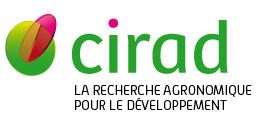Effects of sexual dimorphism on pollinator behaviour in a dioecious species
Moquet L., Jacquemart A.L., Dufay M., De Cauwer I.. 2022. Oikos, 2022 (3) : 10 p..
DOI: 10.1111/oik.08662
Floral traits often display sexual dimorphism in insect-pollinated dioecious plant species, with male individuals typically being showier than females. While this strategy is theorized to be optimal when pollinators are abundant, it might represent a risk when they become scarce, because the disproportionately high number of visits on the most attractive sex, males, might preclude efficient pollen transfer from males to females. Here, the effect of sexual dimorphism on pollination efficiency was assessed in experimental arrays of dioecious Silene dioica that were exposed to one frequent visitor of the species, Bombus terrestris, and that differed in the magnitude of sexual dimorphism for either flower number or flower size. We found that flower number dimorphism negatively affected the number of visits on female plants, on female flowers and on the number of female flowers visited after a male flower. However, flower number dimorphism had no effect on the number of pollen grains deposited per stigma, presumably because the decrease in the number of visits to female flowers was compensated by a higher number of pollen grains deposited per visit. Flower size dimorphism did not affect visitation patterns and pollen transfer in our experimental arrays. These results highlight the need to jointly study visitation patterns and pollen receipt on stigmas when exploring the effect on floral phenotypes on pollination efficiency.
Mots-clﺣ۸s : comportement sexuel; pollinisation; pollinisateur; efficacitﺣ۸; bombus terrestris; pollen; floraison; phﺣ۸notype; bombus; comportement d'affichage; dimorphisme sexuel; silﺣ۷ne
Documents associﺣ۸s
Article (a-revue ﺣ facteur d'impact)
Agents Cirad, auteurs de cette publication :
- Moquet Laura — Bios / UMR PVBMT
